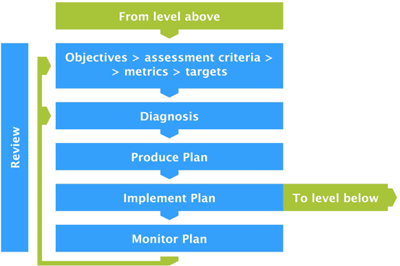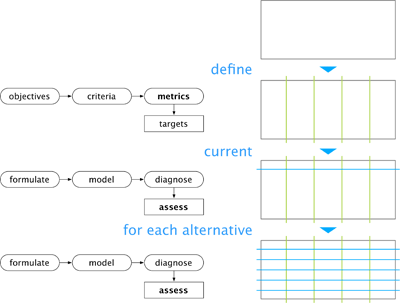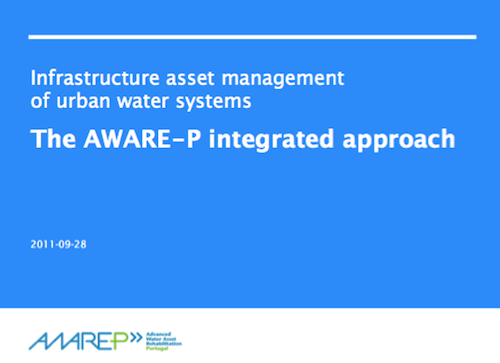Particularly in those parts of the world where the systems were first installed and are therefore older, this infrastructure is reaching alarming levels of deferred maintenance and rehabilitation. The combined replacement value of such infrastructures is staggering, and the amounts of deferred rehabilitation tend to worsen every year.
Today's managers and engineers must cope with a plethora of challenges, including climate change, water scarcity, increased society expectations, technological developments, health- and risk-related challenges. Resource scarcity imposes the need for increasingly effective and efficient system maintenance practices, to which an integrated and sustainable management is essential.As a strategic sector of great social and economic relevance, it is vital that urban water services are managed in a more rational and efficient way than at present. Without an advanced asset management, it will not be feasible to assure adequate levels of service in the future, particularly with regard to reliable high quality drinking water supply, use of natural resources and prevention of pollution and flooding of urban environment.
A structured IAM approach can greatly support a water utility in...
- ensuring sustainability of adequate levels of service
- making clear and straightforward justification of investment priorities
- balancing performance, risk and cost in the short- and long-term
- making sustainable use of water and energy, and minimize the carbon footprint
- planning for climate change adaptations
- emphasizing rehabilitation of existing assets over building new ones, whenever feasible
- promoting investment and operational efficiency gains
Do you manage your urban water infrastructures strategically?
Do you have clear strategies that take into consideration (i) the global external context and its long-term evolution; (ii) the utility's organizational and infrastructural circumstances; and (iii) the stakeholders' context? Infrastructure asset management is the art of finding the best balance of performance, risk and cost among the different progression paths that can be followed for the systems and for the service.
How well do you know your systems?
You cannot manage what you do not know. The foundation of IAM is an updated, reliable inventory of infrastructure assets. If you want to ensure a good quality of service, you need to identify users' needs and expectations, and assess the quality of the service actually provided. You are dealing with water systems: you need to understand how they function hydraulically, as well as from a water quality standpoint. These systems are much more than the algebraic sum of their components. Simply looking at individual components' performance does nothing to ensure that the system performs its function adequately.
If you want to adequately manage the risk of service failure, you will need reliable historic records on infrastructure condition and failures If you wish to rationalize investments, you need to know the present value of your assets, their replacement cost and their O&M costs, from a whole life approach.
Do you have clear management objectives and targets?
It is vital that clear and coherent objectives are set for the organization at the strategic, tactical and operational levels. Each objective should be evaluated against clear criteria, measured through standardized metrics; specific, quantified targets should be set using such metrics.
Do you plan and act according to your management objectives and targets?
Water services utilities are stratified organizations, where it is not always easy to ensure consistency between corporate views, the technical knowledge available around the company, and the day-to-day management of the infrastructure. It makes sense to align tactical, short/medium-term engineering planning, with a realistic set of (a few) long-term strategic goals; and it makes equal sense that operational efforts are not scattered away from the chosen tactical paths.
It is essential that the organization's strategic, tactical and operational objectives and targets and aligned, and that systematic monitoring and verification are undertaken at each level consistently.
Investing to improve your system: how do you generate, compare and select intervention alternatives?
Very few urban water systems can be said to have an ideal layout, optimally sized components, ideal hydraulic, water quality or energy performance, perfectly sized and located storage. Why is it then that infrastructure asset management is still often understood as a pipeline replacement prioritization effort? Systematic like-for-like (L4L) replacement improves the reliability of individual components, but it also perpetuates the system's shortcomings.
For example: most water supply systems with fire-fighting duties use pipe sizes that are too large for regular consumption. In residential areas, this often leads to very low flow velocities and potentially poor water quality performance. By replacing pipes with similar ones, nothing is done to prevent the problem. But the same amount of capital investment could be directed to progressively introduce changes to the network layout that can actively address this, while all the same replacing unreliable components (and whenever possible, reducing pipe sizes).
Good IAM is about finding the best use of resources over a planning horizon to reach the best possible balance of performance and risk. There are many progression paths that improve an urban water system's service performance or help control risks such as interruption of supply or water quality incidents, and there will be a certain combination of interventions that will maximize the benefit of a given amount of investment. It is vital that many diverse alternative solutions to improving the system are explored and compared, on a quantifiable and standardized basis.
Implementing a IAM approach
IAM strives to make the best use of available resources, a principle that is as valid when there are many resources, as when these are scarce. IAM can not be solved by a piece of software alone; surely, software can significantly help parts of the process, but there is a fundamental organizational dimension in articulating the various levels and the various competences in a utility in order to achieve the best possible alignment of resources and efforts.
A structured IAM approach will only realise its full potential if embraced and implemented by all the decisional levels of the organisation, from top management to tactical departments to operational action. The key element is involving the people that will carry out the structured planning effort. Data records are the foundation: don't wait to start improving the quality and coverage of data on the physical assets, on their condition and failure rates.
IAM is a long-term effort: it is important to set up a clear vision, avoid complexity, and take small but steady steps.



